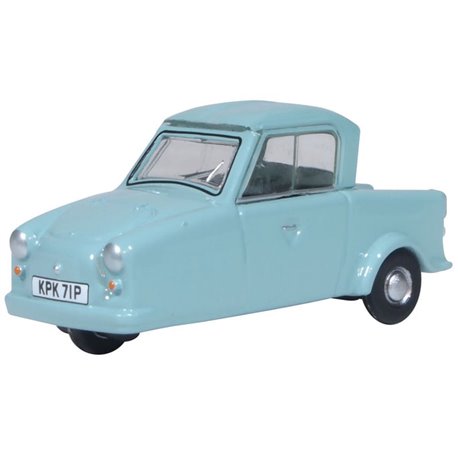No products
Product successfully added to your shopping cart
There are 0 items in your cart. There is 1 item in your cart.
 View larger
View larger AC Invacar Pale Blue
76INV001
Oxford
This product is out of stock
More info
AC Invacar Pale Blue
The AC Invacar. As with many things in life, its concept was borne out of a personal need as well as being of benefit to many other people. In 1948 a British engineer Bert Greeves, who had been born in France in 1906, came up with his first motorised wheelchair, powered by a lawnmower engine and designed to help his paralysed cousin get about. Bert's first job in England had been with the Austin Motor Company in their Longbridge factory following which he set up his own garage business in London, where his main occupation was a motorcycle designer and manufacturer. Together with his disabled cousin Derry Preston-Cobb, the pair saw the potential in further developing this new invalid carriage and founded Invacar Ltd - an abbreviation of Invalid Carriage. The small single-seater vehicle won the small company a contract with the Ministry of Pensions as a national supplier of transport for the physically disabled which went on for nearly 30 years. The Government distributed the Invacar free to eligible people, particularly those injured or maimed in the war, as part of their disability allowance, providing a welcome lifeline and high level of independence for its recipients.
Designed as a single seat vehicle with wide sliding doors for entry by wheelchair, the driver could stow the folded wheelchair next to him when driving. The sliding seat also made access easy. The special chassis was of welded construction using heavy gauge steel sections. The body was made of high quality fibreglass. The simple user manual explained the three control options; via a conventional steering wheel; a bicycle handlebar steering system; or tiller bar, all available without foot controls where desired. The brakes could be applied by depressing the handlebars; there was a hand throttle and the controls could be adapted for left or right hand position/operation. The Invacar was powered in its early years by an air-cooled Villiers 147 cc engine but was replaced in the 1970s by a 500cc or 600 cc Steyr-Puch two-cylinder engine which functioned for long periods without the need for servicing. It also had a reputed top speed of 82 mph! The 12-volt Bosch starting mechanism also provided 240 watts for battery charging. The power was transmitted through the fully automatic system with a centrifugal clutch to a differential and was controlled by a single lever for forward, reverse and neutral positioning. The direction of travel was determined when the vehicle was stationary.
The Invacar was modified many times over the years with around 50 variants being produced to accommodate special requirements. It was produced in tens of thousands until the end of the Government contract in 1977. Some came with an extended wheelbase, a widened track and the use of Austin Mini wheels. The Invacar even had internal anchorage points for a wheelchair, a seat belt, manually operated windscreen washers, a fire extinguisher and the addition of a storage rack behind the driver.
Although in 2003, the Government reclaimed and scrapped all the Invacars they had supplied, due to health and safety regulations, many remained in private ownership and surprisingly, they are still allowed on UK roads. In fact, in the late 1970s an AA man was called out by the Police to recover two Invacars on the M5 motorway. Their occupants had been pulled over after overtaking the Police car at more than 70 mph!
Our 1:76 Scale Oxford version of the wedge-shaped Invacar with its inward sloping rear window and wide side doors, will appear in the traditional ice blue colour of the original, registered KPK 71P from 1975/76. All the interior features are finished in black and the model is rounded off with silver wheels.

